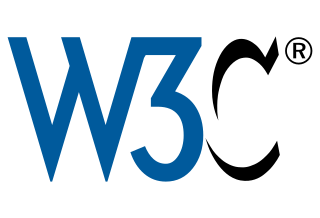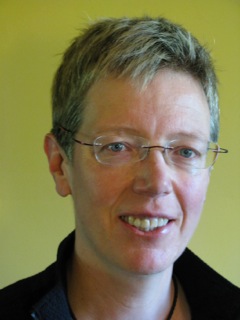
In 1998, the U.S. Congress amended the Rehabilitation Act to require federal agencies to make their electronic and information technology accessible to people with disabilities. Section 508 was enacted to eliminate barriers in information technology, to make available new opportunities for people with disabilities and to encourage the development of technologies that will help achieve these goals. The law applies to all federal agencies when they develop, procure, maintain, or use electronic and information technology. Under Section 508, agencies must give employees with disabilities and members of the public access to information that is comparable to the access available to others.

Accessibility is the design of products, devices, services, vehicles, or environments so as to be usable by people with disabilities. The concept of accessible design and practice of accessible development ensures both "direct access" and "indirect access" meaning compatibility with a person's assistive technology.

Computer accessibility refers to the accessibility of a computer system to all people, regardless of disability type or severity of impairment. The term accessibility is most often used in reference to specialized hardware or software, or a combination of both, designed to enable the use of a computer by a person with a disability or impairment.
Universal design is the design of buildings, products or environments to make them accessible to people, regardless of age, disability or other factors. It addresses common barriers to participation by creating things that can be used by the maximum number of people possible. Curb cuts or sidewalk ramps, which are essential for people in wheelchairs but also used by all, are a common example of universal design.
Web accessibility, or eAccessibility, is the inclusive practice of ensuring there are no barriers that prevent interaction with, or access to, websites on the World Wide Web by people with physical disabilities, situational disabilities, and socio-economic restrictions on bandwidth and speed. When sites are correctly designed, developed and edited, more users have equal access to information and functionality.
Inclusive design is a design process in which a product, service, or environment is designed to be usable for as many people as possible, particularly groups who are traditionally excluded from being able to use an interface or navigate an environment. Its focus is on fulfilling as many user needs as possible, not just as many users as possible. Historically, inclusive design has been linked to designing for people with physical disabilities, and accessibility is one of the key outcomes of inclusive design. However, rather than focusing on designing for disabilities, inclusive design is a methodology that considers many aspects of human diversity that could affect a person's ability to use a product, service, or environment, such as ability, language, culture, gender, and age. The Inclusive Design Research Center reframes disability as a mismatch between the needs of a user and the design of a product or system, emphasizing that disability can be experienced by any user. With this framing, it becomes clear that inclusive design is not limited to interfaces or technologies, but may also be applied to the design of policies and infrastructure.
PAS 78: Guide to good practice in commissioning accessible websites is a Publicly Available Specification published on March 8, 2006 by the British Standards Institution in collaboration with the Disability Rights Commission. It provides guidance to organisations in how to go about commissioning an accessible website from a design agency. It describes what is expected from websites to comply with the UK Disability Discrimination Act 1995, making websites accessible to disabled people.
Universal usability refers to the design of information and communications products and services that are usable for every citizen. The concept has been advocated by Professor Ben Shneiderman, a computer scientist at the Human-Computer Interaction Lab at the University of Maryland, College Park. He also provided a more practical definition of universal usability – "having more than 90% of all households as successful users of information and communications services at least once a week." The concept of universal usability is closely related to the concepts of universal design and design for all. These three concepts altogether cover, from the user's end to the developer's end, the three important research areas of information and communications technology (ICT): use, access, and design. tite

The Web Content Accessibility Guidelines (WCAG) are part of a series of web accessibility guidelines published by the Web Accessibility Initiative (WAI) of the World Wide Web Consortium (W3C), the main international standards organization for the Internet. They are a set of recommendations for making Web content more accessible, primarily for people with disabilities—but also for all user agents, including highly limited devices, such as mobile phones. WCAG 2.0, were published in December 2008 and became an ISO standard, ISO/IEC 40500:2012 in October 2012. WCAG 2.2 became a W3C Recommendation on 5 October 2023.
In 2003 and following years, initiatives were instituted to improve internet access for people with disabilities in the Philippines. These measures were inspired by the UNESCAP "Asia-Pacific Decade for Disabled Persons" (1993–2002). Key organizations included the government body National Council for the Welfare of Disabled Persons (Philippines) and the private sector body Philippine Web Accessibility Group (PWAG). The "Disabled Friendly Website Awards" were launched to encourage web designers to incorporate universal access. Since 2009 unhampered access to Information and Communications Technology (ICT) has been in the second National Human Rights Action Plan of the Philippine government.

Accessible tourism is the ongoing endeavor to ensure tourist destinations, products, and services are accessible to all people, regardless of their physical or intellectual limitations, disabilities or age. It encompasses publicly and privately owned and operated tourist locations. The goal of accessible tourism is to create inclusivity of all including those traveling with children, people with disabilities, as well as seniors. This allows those with access requirements to be able to function as an independent using products following the universal design principle, a variety of services, and different environments.
CEN/CENELEC Guide 6: Guidelines for standards developers to address the needs of older persons and persons with disabilities is a document for participants in standardisation activities at CEN and CENELEC that contains guidance for the creation and the revision of standards to ensure greater accessibility of products and services. The document is a "Guide", in other words, not a European Standard (EN). The guide is identical to ISO/IEC Guide 71 and was adopted by both the CEN Technical Board and the CENELEC Technical Board, and published in January 2002. The adoption of CEN/CENELEC Guide 6 resulted from a European mandate to the European standardisation organisations, and the European Commission is funding projects to promote the use of the Guide.
Lisa Seeman is an inventor and an entrepreneur and has been instrumental in creating standards for interoperability and accessibility.

COMPAT.eGov is a European LLP research project financed through the Lifelong Learning Programme of the European Union. The project consortium is composed of eight partners from four countries.
Text to speech in digital television refers to digital television products that use speech synthesis to enable access to blind or partially sighted people. By combining a digital television with a speech synthesis engine, blind and partially sighted people are able to access information that is normally displayed visually in order to operate the menus and electronic program guides of the receiver.
The Inclusive Design Research Centre (IDRC) is a research and development centre at OCAD University in Toronto, Canada. The centre defines inclusive design as that which "considers the full range of human diversity with respect to ability, language, culture, gender, age and other forms of human difference." The research centre is directed by Jutta Treviranus. In 2011 the centre launched a Master of Design in Inclusive Design.

Jutta Treviranus is a full Professor at the Ontario College of Art and Design University (OCADU) in Toronto, Canada. She is the director and founder of the Inclusive Design Research Centre (IDRC) and the Inclusive Design Institute (IDI).
The European Accessibility Act is a directive of the European Union which took effect in April 2019. This directive aims to improve the trade between members of the EU for accessible products and services, by removing country specific rules. Businesses benefit from having a common set of rules within the EU, which should facilitate easier cross-border trade. It should also allow a greater market for companies providing accessible products and services. Persons with disabilities and elderly people will benefit from having more accessible products and services in the market. An increased market size should produce more competitive prices. There should be fewer barriers within the EU and more job opportunities as well.
EN 301 549 is a European standard for digital accessibility. It specifies requirements for information and communications technology to be accessible for people with disabilities.
The Guidelines for Indian Government Websites (GIGW) are a set of guidelines developed by the National Informatics Centre (NIC) in collaboration with the Indian Computer Emergency Response Team (CERT-In), Standardisation Testing and Quality Certification (STQC) and Ministry of Electronics and Information Technology. They are based on the Rights of Persons with Disabilities Act 2016, W3C's Web Content Accessibility Guidelines, International Standards including ISO 23026, and the Information Technology Act of India.





